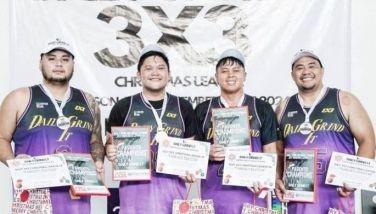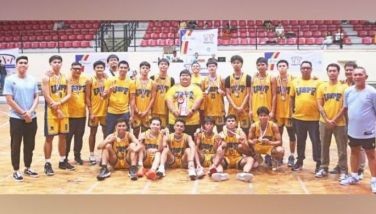TF Foundation to check site for planting of mangroves
May 3, 2006 | 12:00am
The FREEMAN Foundation with the guidance of the City Environment and Natural Resources Office will conduct an ocular inspection and survey of a site in barangay Poblacion, Cordova town this Saturday, May 6, for its very first environmental project, the mangrove propagule planting set on May 27 in time for the Ocean Month celebration.
Dr. Simeon Rosel, officer in charge for this type of activity at CENRO with Rose Saya-ang, community development organizer, along with TF general manager Melandro Mendoza and TF foundation administrator, Dr. Remedios Bacasmas, will lead the core group of the foundation in inspecting a muddy portion of the coastline of barangay Poblacion for the probable site where volunteers of the foundation will plant mangrove propagules.
Rosel advised the core group that selection of appropriate site is very critical in mangrove propagule planting. He said that the major factors to be considered in the selection of planting sites are soil, water depth and tidal inundation, exposure, and the area being heavily infested with barnacles or what is locally known as sisi.
He explained that the bakauan-babae specie grows best in waterlogged, deep, soft and muddy soil, while the bakauan-bangkaw prefers sandy to coralline areas. Meanwhile, bakauan-lalaki is rather intermediate between the two being able to adapt on both soil types.
Above all, the soil must be stable whether sandy, muddy or coralline, he said.
Rosel also said that it is rule of the thumb "to be assured of high survival and good growth of bakauans, limit planting on areas that are totally without water during low tide of neap tide days." Neap tide periods are those days with very minimal rise and fall of tidewater. Areas that retain even minimal depth of water during low tide of neap tide days would likely subject the young bakauans to heat injury. Moreover, growth of nuisance barnacles and algae that attach to the young stems of bakauans are favored if plant stems are always submerged in water.
Planting sites should also be sheltered against the general direction of strong winds and typhoons as in coves. The presence of natural growth of sea grasses or wildlings in an area is a direct indication that the site is sheltered, he explained.
The young bakauans are helpless against the onslaught of strong winds, waves and tidal current. In terms of exposure to sunlight, bakauans are generally sun-loving species. Hence, plantation sites should be in open areas.
These sites should also be checked for the prevalence of barnacles attached to rocks, stumps and trunks of remaining trees. These sites are difficult to plant because young bakauans are helpless to pest. - Maria Eleanor E. Valeros
Dr. Simeon Rosel, officer in charge for this type of activity at CENRO with Rose Saya-ang, community development organizer, along with TF general manager Melandro Mendoza and TF foundation administrator, Dr. Remedios Bacasmas, will lead the core group of the foundation in inspecting a muddy portion of the coastline of barangay Poblacion for the probable site where volunteers of the foundation will plant mangrove propagules.
Rosel advised the core group that selection of appropriate site is very critical in mangrove propagule planting. He said that the major factors to be considered in the selection of planting sites are soil, water depth and tidal inundation, exposure, and the area being heavily infested with barnacles or what is locally known as sisi.
He explained that the bakauan-babae specie grows best in waterlogged, deep, soft and muddy soil, while the bakauan-bangkaw prefers sandy to coralline areas. Meanwhile, bakauan-lalaki is rather intermediate between the two being able to adapt on both soil types.
Above all, the soil must be stable whether sandy, muddy or coralline, he said.
Rosel also said that it is rule of the thumb "to be assured of high survival and good growth of bakauans, limit planting on areas that are totally without water during low tide of neap tide days." Neap tide periods are those days with very minimal rise and fall of tidewater. Areas that retain even minimal depth of water during low tide of neap tide days would likely subject the young bakauans to heat injury. Moreover, growth of nuisance barnacles and algae that attach to the young stems of bakauans are favored if plant stems are always submerged in water.
Planting sites should also be sheltered against the general direction of strong winds and typhoons as in coves. The presence of natural growth of sea grasses or wildlings in an area is a direct indication that the site is sheltered, he explained.
The young bakauans are helpless against the onslaught of strong winds, waves and tidal current. In terms of exposure to sunlight, bakauans are generally sun-loving species. Hence, plantation sites should be in open areas.
These sites should also be checked for the prevalence of barnacles attached to rocks, stumps and trunks of remaining trees. These sites are difficult to plant because young bakauans are helpless to pest. - Maria Eleanor E. Valeros
BrandSpace Articles
<
>
- Latest
- Trending
Trending
Latest
Trending
Latest
Recommended



















